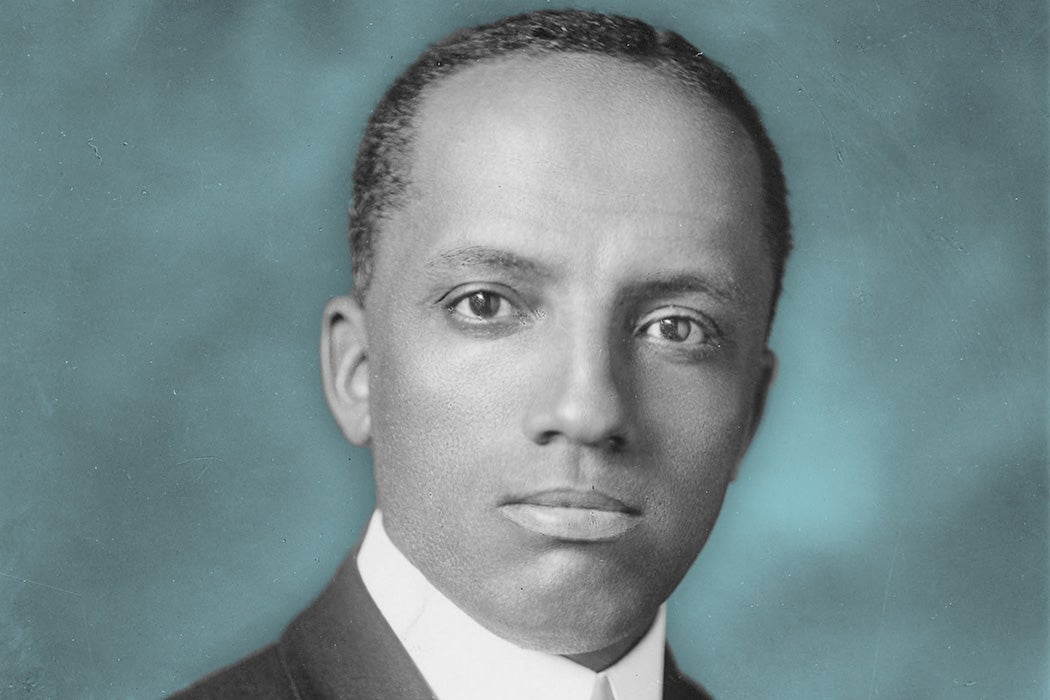The Smithsonian’s National Museum of African American History & Culture was established in 2003. The doors of its permanent home in Washington, DC, opened in 2016, the result of a decades-long effort to broaden the Smithsonian’s mission, the “increase and diffusion of knowledge.”
The NMAAHC, or “Blacksonian,” has its antecedents in cultural centers and museums of Black art, culture, and history found across the country. Historian and curator Fath Davis Ruffins examines how the founders and founding directors of these earlier institutions were typically the product of historically black college and university (HBCU) eductions rooted in the “Negro Canon” formulated in 1910s and 1920s.
Black History Month will celebrate its 50th anniversary in 2026, but it stretches back another half-century to the foundation of Negro History Week in 1926. The prime mover for the Week was Carter G. Woodson, the second Black PhD from Harvard after W. E. B. Du Bois. Woodson was also, notes Ruffins, the first and only Harvard PhD who was a child of formerly enslaved Americans. In addition to Negro History Week, Woodson helped set up the Association for the Study of African American Life and History (1915) and launched, with Jesse B. Moreland, The Journal of Negro History (1916; now The Journal of African American History).
Born in 1875 Virginia, Woodson consciously strove, writes Ruffins, to celebrate the “history of Black achievements and accomplishments” in the face of “social oppression and the internalized belief that Black people were intellectually inferior, with no significant history or culture.” Like Du Bois, who publicized the idea, Woodson was a proponent of Black consciousness—pride in blackness as personal liberation and political action.
Woodson’s “Negro Canon,” expanded by Alain Locke and other participants in the Harlem Renaissance, was a “body of African American history, culture, and art” developed to “combat the notion that Black people were a people ‘without history.’” This “without history” idea, a foundation of white supremacy, was pervasive in America for centuries. (And not just America: for instance, English historian Hugh Trevor-Roper, usually described as “eminent,” emphatically declared in 1963 that there was no African history to speak of, “only the history of Europeans in Africa.”)
Of course, the founders of Black museums and cultural centers in the US lived in very different times from the first decades of the twentieth century when Woodson, Du Bois, and Locke were in their prime. The stepping stone those intellectual forebears created, however, helped inspire the museum-founding generation, who came to professional maturity after WWII. This post-war generation, writes Ruffins, “created new realities out of the opportunities generated by the modern Civil Rights Movement, the urban rebellions and the political upheavals of the 1960s and 1970s.”
“All of these museum founders were activists in local and national causes,” she notes. “Some had worked previously in newly liberated African nations, so their understandings of the connection between African and African American art, history, and culture was not based on imagined similarities, but on real human relationships and experiences.”
By the early 1980s, several of these museums were still being run by their original founders and/or founding directors, including Margaret Burroughs at Ebony Museum of Art and Culture (Chicago, 1959; now the DuSable Black History Museum and Education Center); Charles Wright at the International Afro-American Museum (Detroit, 1965, now the Charles H. Wright Museum of African American History); Joan Maynard of the Weeksville Heritage Society (Brooklyn, 1968); E. Barry Gaither at the National Center for Afro-American Artists (Boston, 1968); and Rowena Stewart at the Rhode Island Black Heritage Society (Providence, 1976) and, later, the Motown Museum (Detroit, 1985).
Weekly Newsletter
In Washington, DC, the first generation of Black professionals at the Smithsonian, including John Kinard of the Anacostia Neighborhood Museum (1967; now the Anacostia Community Museum)—he was the first Black director of a Smithsonian museum—and Bernice Johnson Reagon and James Early of the Folklife Center (1969) “played crucial roles as the Smithsonian began to change its longtime narratives” about American history and culture.
“Black museum founders, founding directors, and pioneers at the Smithsonian Institution all should be considered members of the Black Consciousness Movement,” writes Ruffins.
Ruffins interviewed nineteen of these pioneers, just a few short of the full number (twenty-one) of professionals who formed the African American Museums Association in 1978. It’s now called the Association of African American Museums and lists over 300 institutions in is directory.
Support JSTOR Daily! Join our membership program on Patreon today.







